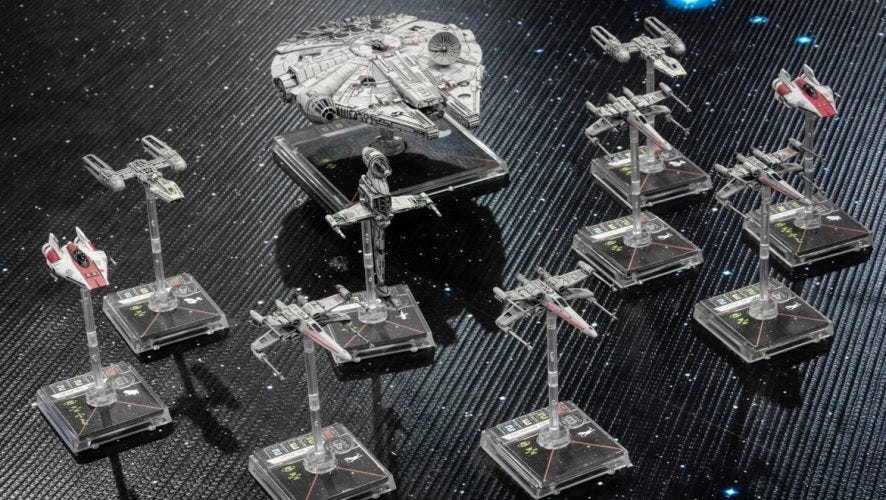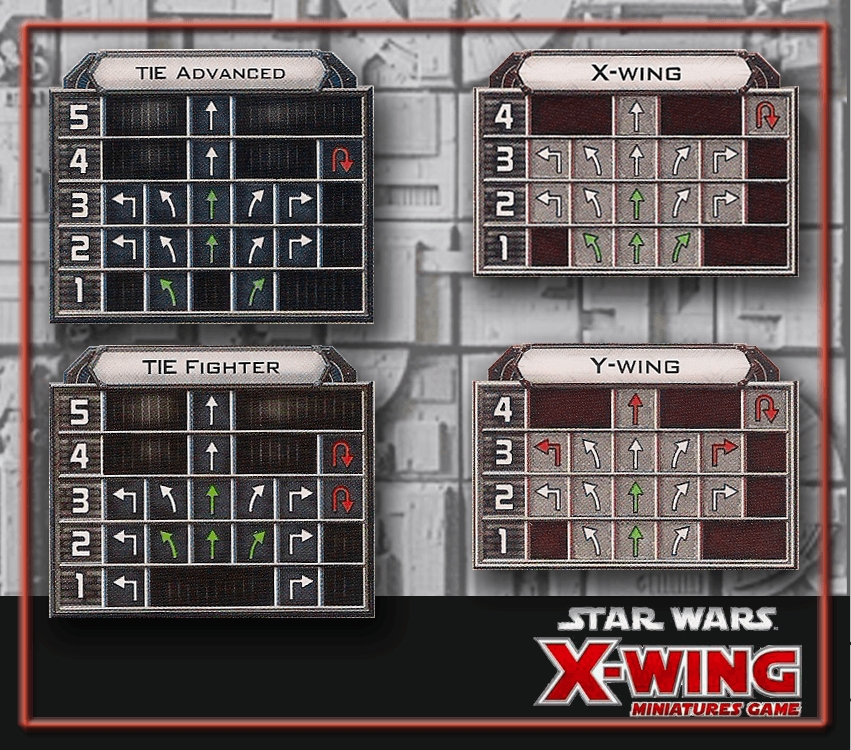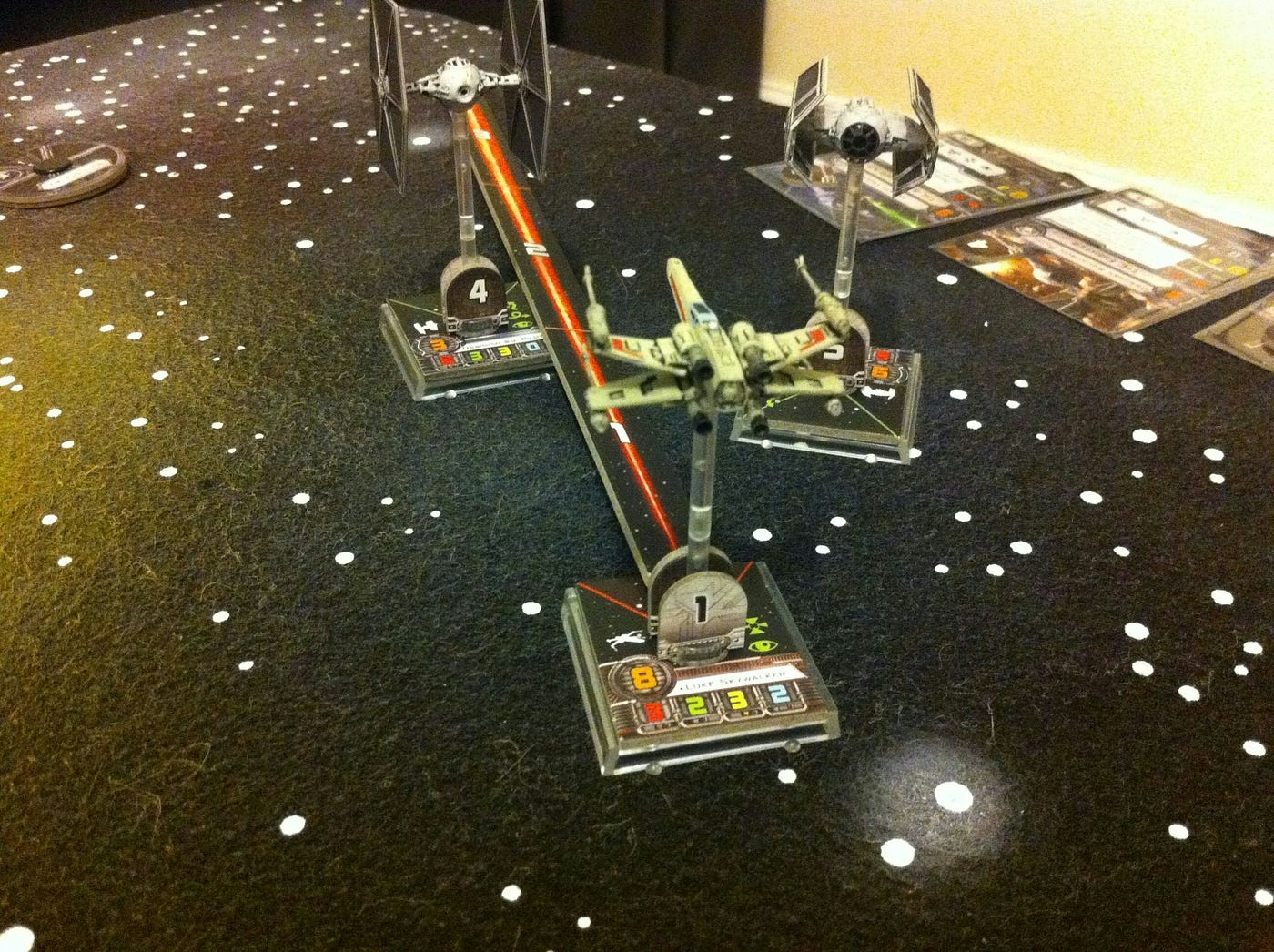Unblocking On-Chain Games: Part Three — The Dogfighter Genre

Will Robinson
·Nov 3, 2022

This is Part Three of a series exploring constraints at the intersection of blockchains and games. The objects of inquiry are “crypto-native” or “on-chain” games, which maintain their game state trustlessly.
About me: I’m a core contributor to Alliance DAO, a startup accelerator and founder community. I’m a co-founder of @d_fdao (Dark Forest DAO), a group of on-chain game builders. I hold a PhD in Game Design.
The Context for Dogfighters
While there have been several aerial combat boardgames, the branch that interests me here stems from Wings of War: Famous Aces (Angiolino & Paglia, 2004). Set in WWI, two sides compete to destroy the other’s air force. Wings of War was re-implemented as Star Wars: X-Wing Miniatures Game (Little, 2012) and then later re-rebalanced in a Second Edition (Little & Brooks, 2018). Not only did X-Wing reskin Wings of War, it cleaned the up the rules, explored more of the game design space and added recurring monetization. On this last point, players would continue to buy new models, pilots and weapons cards. These would come out a couple times a year and enable players to re-shape their armadas. While I think this IRL structure of buying new collectibles to add more gameplay is awesome, and totally in line with what web 2.5 gaming wants to do with its NFTs, monetization is not the focus of this essay. Instead, I want to talk about the core gameplay loop and how the “fun” created by this genre of dogfighters is adaptable to fully on-chain gaming.
To setup the game, you first need to a choose a fleet size. Each ship costs something between 10% and 50% of your fleet’s allowance, depending on the model, the pilot and the equipment inside. A medium-sized game could feature three well-equipped B-wings versus seven TIE Fighters, or a Squad of A-wings carrying Proton Rockets lead by the Millennium Falcon versus a pair of Lambda Shuttles and Darth Vader piloting a TIE Advanced x1.
With fleets determined, players then setup on their sides of the board, placing ships in what they feel are optimal formations. At that point, the game begins the following recurring loop:
1. Each side selects the flight paths of their ships.
Secretly, each player commits to an arc that each of their ships will take. Some of these manoeuvres are stress-inducing, such as the U-turn. Others are stress-relieving, such as drifting slowly forward. Each ship has its own mobility. In the diagram below, you can see that Y-wings are terrible at moving quickly and even mid-ranged movements cause them stress. On the other hand, TIE Fighters are great at turning and moving quickly. They even have a tighter U-turn available to them.
Because this piece of the core gameplay loop requires secretly selecting moves for each of your ships all at once, players ends up making several decisions in a single transaction. This appeals to what I described in an earlier post regarding “Multiplayer Solitaire” section 2.A and is a core component of the dogfight genre. You are playing cat-and-mouse with your opponent, guessing where they will fly to next, hoping to that your own manoeuvre puts you behind them. While some ships have 360 degree firing arcs, the majority have 90 degrees directly in front.

Available movements of select ships (Star Wars X-Wing).
2. Both sides reveal and execute their flight paths.
After having committed to the paths of each of their ships, they move according to initiative. For example, TIE Fighters move before Y-wings. Their movement is determined by placing the corresponding path on the front part of the ship, lifting it and then placing the ship so its back is against the end of the movement path.

Movement of a Tie Fighter after revealing secret movement selection (Star Wars X-Wing).
3. Ships with sights on their opposition fire weapons.
Once everyone has moved their ships, the game enters the firing stage. Here, ships can choose to fire on enemies in their firing arcs. Most will be able to use weapons on targets a few inches away. Some have longer range. In the image below, you can see an X-wing has successfully maneuvered itself to shoot a TIE Fighter at close range. It will get to roll three attack dice and have a good chance of blowing it’s enemy up. If it doesn’t, the following turn will see both ships blow past each other, giving an advantage to the more manoeuvrable TIE to end up on the X-wing’s tail.

To reiterate, the reason the above loop works so well is because the two players are moving up to 20 ships, but only making four transactions (Commit Empire, Commit Rebel, Reveal Empire, Reveal Rebel). This is because everyone must commit to every move at the same time. This kind of asynchronous play is one of the game design patterns I look for when thinking about what the future on-chain games will look like.
Since a competitive X-Wing game lasts an average of 45 minutes over seven rounds, we have (2 Rebel moves + 1 Rebel fire + 2 Empire moves + 1 Empire fire)*(7 rounds)/(45 minutes *60 seconds) = 0.02 moves per second. With 8 TPS, we could accommodate 800 concurrent on-chain players.
Additional Features of Dogfighters for On-Chain Gaming
Given the dozens of ships, pilots and equipment much of the game happens before it is even played. As with Magic: The Gathering (Garfield 1993) and its deck building elements, players need to design synergized collections of game pieces. This is yet another key feature that X-Wing brings to blockchain gaming. You can’t clog the chain if your moves aren’t changing a shared state. I’ve mentioned this kind of block-space-saving game design pattern before, where I recommended we look for games that are played without altering a shared state. I called these “Out-of-band moves” and I thank Justin Glibert for getting me there. At the time, what came to mind is diplomatic relationship management, but deck-building is an excellent alternative example.
Further, even once you have chosen your fleet, you get to also choose your formation. Do you position your pieces further back and play defensively or go aggressive? Do you spread out or clump together? Do you play out of the center or from a far side? And do even get me started about the impact on asteroids have on the battlefield. All of these decisions, much like fleet selection, happen before the game even starts. This means that it only takes a single commitment to the chain to concretize boatloads of game play.
Given that so much of the gameplay happens outside of the chain’s state, I think we could consider that the bandwidth is sufficient for three times the number of players suggested above, some 5,000 concurrent users.
Conclusion
While we are still painfully early in on-chain gaming, particularly because of scaling, games like X-Wing offer an immediate path forward. I also think that we are going to solve a lot of the scaling problems being felt now, particularly with solutions such as Lattice’s MUD on app specific rollups. Importantly, we do not need to take X-Wing’s design wholesale. The key take-away is to find games where players do a lot of actions alone and only reconcile their states later.
More to Read
You're Vibe Coding Wrong

Mohamed Elseidy
·Jul 10
Most developers use Tier 1 for UX & rapid prototyping, Tier 2 for daily development, and Tier 3 for complex engineering challenges. The best strategy is to combine them when needed rather than trying to force one tool to do everything. Here's what each tier actually delivers and when you should use them
Your Moat Isn't Your AI Prompt. It's Your Evaluations

Mohamed Elseidy
·Jun 17
Anyone can copy a prompt, but they can't replicate the months of iterative learning, the domain knowledge and the edge cases discovered through real user interactions, and the systematic evaluation framework that guided every prompt tweaking decision.
Shopping is Dead, AI is Taking Over

Mohamed Elseidy
·May 28
Major payment networks are building the infrastructure while AI platforms began to deploy; for startups, this opens opportunities in vertical specialization and merchant tools; and SEO will evolve into AEO as businesses adapt to optimize for AI agents rather than human shoppers.